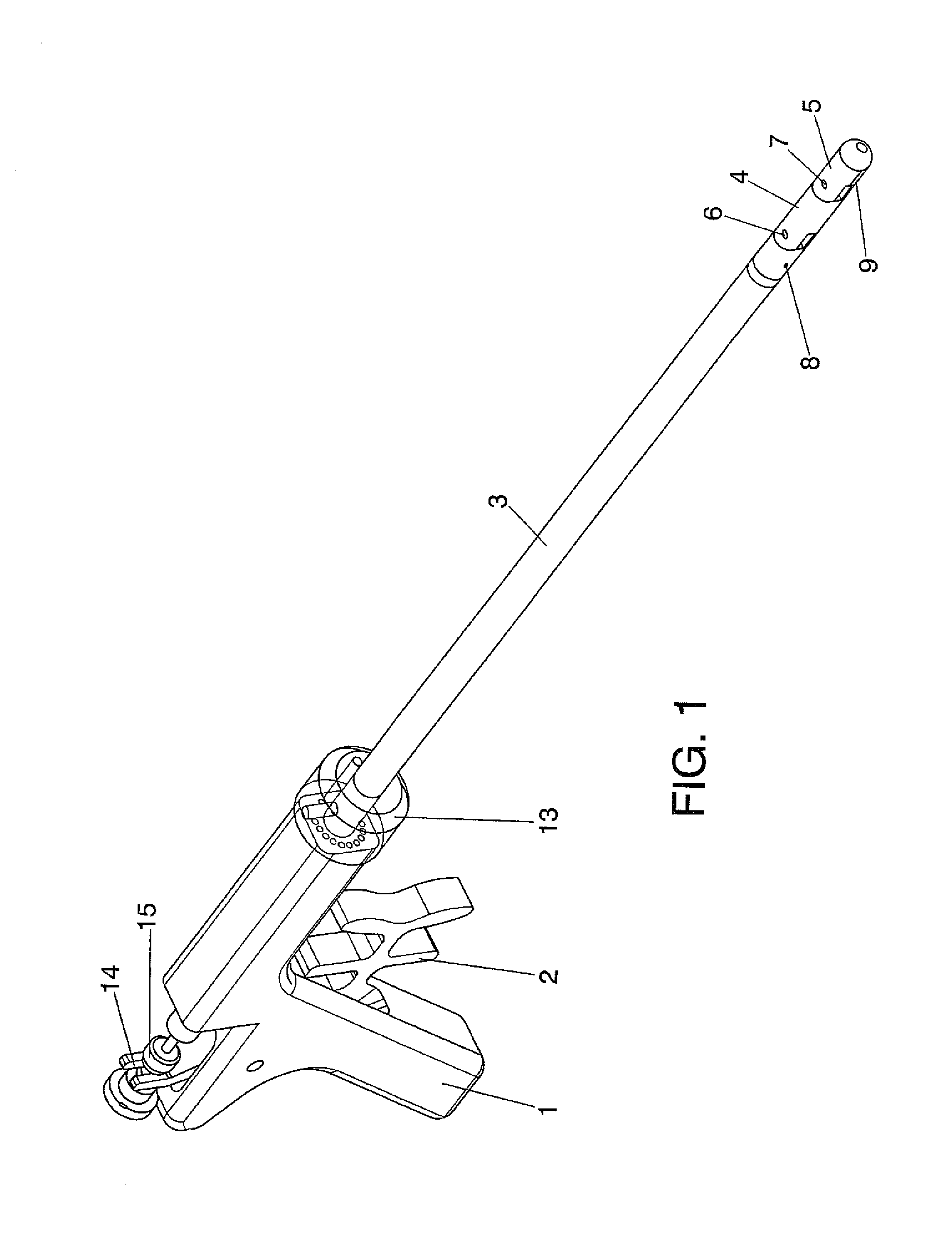Surgical instrument for endoscopic surgery
a surgical instrument and endoscope technology, applied in the direction of laproscopes, diagnostics, applications, etc., can solve the problems of reducing the manoeuvring ability of the operator, the precision of the control of the movement of the instrument is not very high, and the application of the instrument is limited
- Summary
- Abstract
- Description
- Claims
- Application Information
AI Technical Summary
Benefits of technology
Problems solved by technology
Method used
Image
Examples
Embodiment Construction
[0011]The present invention refers to a surgical instrument for endoscopic surgery which permits the execution of movements that emulate those performed by a surgeon's finger in open surgery operations, by means of a double articulation, all this in an easy and precise way, controlled simply by the surgeon with just one hand, in order to obtain, for instance, the mechanical emulation of the movements of dissection of anatomical spaces of loose conjunctive tissue.
[0012]In view of its features, the surgical instrument proposed by the invention has a special application in operations performed on both the upper and lower abdomen, using the endoscopic route. In the case of operations on the upper abdomen it is applicable, for example, in cholecystectomy or in gastroesophageal fundoplicature, in gastrectomy or in nephrectomy. In the case of operations on the lower hemiabdomen, the instrument is used to carry out the dissection of the preperitoneal space in the repair of a inguinal hernia...
PUM
 Login to View More
Login to View More Abstract
Description
Claims
Application Information
 Login to View More
Login to View More - R&D
- Intellectual Property
- Life Sciences
- Materials
- Tech Scout
- Unparalleled Data Quality
- Higher Quality Content
- 60% Fewer Hallucinations
Browse by: Latest US Patents, China's latest patents, Technical Efficacy Thesaurus, Application Domain, Technology Topic, Popular Technical Reports.
© 2025 PatSnap. All rights reserved.Legal|Privacy policy|Modern Slavery Act Transparency Statement|Sitemap|About US| Contact US: help@patsnap.com



